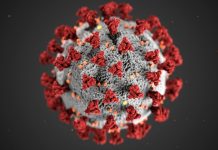Why pandemics demand a new discovery playbook
COVID-19 exposed a familiar bottleneck: traditional hit discovery is too slow when a pathogen spreads exponentially. Antivirals need to move from idea to lead in months, not years. That urgency is forcing teams to combine scalable wet-lab technologies with data-centric methods that compress design-make-test cycles.
What DNA-encoded libraries bring to the table
DNA-encoded libraries (DELs) let chemists screen billions of small molecules in a single pooled experiment by attaching a short DNA tag that records each compound’s identity. After binding assays against a viral target, next-generation sequencing reveals which tags are enriched, pointing to starting chemotypes. DELs are cost-efficient, tolerant to diverse targets, and well suited to quickly mapping structure-activity relationships during early triage.
Why machine learning is the DEL multiplier
DEL campaigns generate sparse but information-rich signals: enrichment counts, chemical substructures, and assay metadata. Machine learning can translate those signals into ranked candidate lists and generative proposals. Practical gains include: denoising sequencing artifacts, prioritizing analogs by predicted binding or ADMET properties, and exploring pockets with physics-aware features such as 3D pharmacophores. Critically, ML models become stronger across campaigns by transfer learning on prior viral families.
Target selection and assay design still decide outcomes
Speed does not excuse weak biology. Pandemic-ready workflows start from validated mechanisms such as polymerase or protease inhibition, establish robust orthogonal assays, and include counterscreens to avoid frequent hitters. Early attention to viral resistance mapping and human off-targets reduces downstream attrition.
From hits to leads in compressed cycles
A modern loop looks like this: choose a high-value viral protein, run a DEL selection, use ML to rank and cluster enriched chemotypes, resynthesize top analogs off-DNA, confirm activity in biochemical and cellular assays, and feed results back to retrain models. Parallel in silico designs propose novel scaffolds beyond the original library, while property predictors steer toward oral bioavailability and safety.
Data standards and reproducibility
Pandemic contexts magnify the cost of irreproducible data. Teams should predefine data schemas for sequencing, chemistry, and assay outcomes, use versioned notebooks and registered datasets, and track model lineage. Sharing minimal, de-identified datasets with the community accelerates collective learning without compromising IP.
Building the right partnerships
No single lab owns all pieces. The fastest programs align CRO capacity for DEL synthesis and selections with internal or partner ML platforms, standardized QC, and transparent governance over data use. One practical overview of the field is available here: dna encoded library drug discovery.
What can be concluded?
Pandemic-ready discovery is not a slogan. It is a concrete operating model that fuses DEL throughput with machine learning guidance, backed by strong biology and disciplined data practices. With the right loop in place, teams can deliver credible antiviral leads on timelines measured in quarters, not years.










































